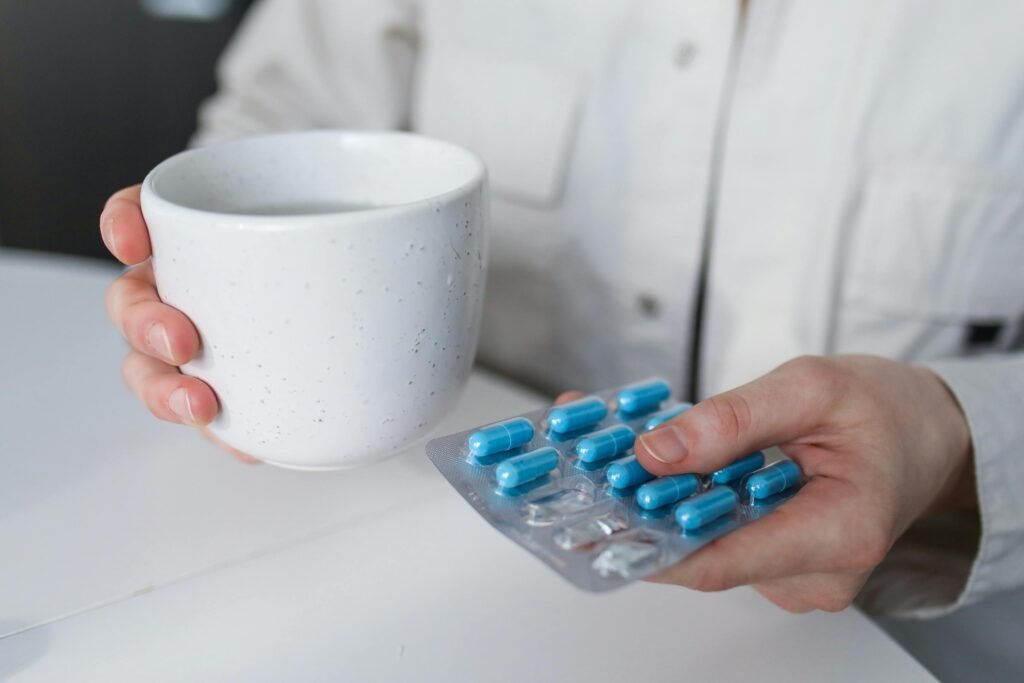Berberine is a natural plant derivative that has been used for centuries in Chinese and traditional medicines for diabetes, inflammation, and other illnesses.
However, it has a mechanism of action that resembles metformin. Although Berberine has been compared with Ozempic and Jardiance, there is no resemblance and these drugs have not been compared with Berberine in clinical trials.
Berberine can be used to boost energy or as a supplement for diabetes and weight loss but it can not replace metformin, Jardiance, or Ozempic.
This article is a simple summary of the properties of Berberine vs Jardiance. It is not a research article and it’s not for someone looking for alternative options for diabetes or weight loss.
So, can Berberine, a naturally occurring plant compound, compete against Jardiance, which is a leading pharmaceutical drug in managing blood sugar?
The former has gained so much attention for its possible role in regulating glucose levels and improving insulin sensitivity, making it popular among those looking for natural alternatives.
On the other hand, Jardiance (empagliflozin) is a famous SGLT2 inhibitor that is commonly used for diabetes management and cardiovascular protection.
Buy Organic Oolong Berberine and Mint Tea
Basic information
Berberine
This is a natural alkaloid with a long history of use, as it originated from traditional medicinal systems like Ayurveda and Traditional Chinese Medicine (TCM). It is known for its unique yellow color and the name comes from its discovery in the Berberis genus of plants.
Berberine’s has cultural and historical significance because of its use in ancient remedies, with records of its use dating back thousands of years.
Jardiance
Jardiance is the brand name of empagliflozin. It’s a drug that came from endless pharmaceutical research aimed at addressing metabolic disorders.
Boehringer Ingelheim made this in collaboration with Eli Lilly and Company, both of which are prominent names in the pharma industry. Jardiance was approved by the U.S. Food and Drug Administration (FDA) in 2014 [ref], and it represented significant progress in the therapeutic strategies. In 2023, FDA approved this drug for managing chronic kidney disease (CKD) [ref].
Mechansim of action of Berberine Vs Jardiance:
Berberine
This is a bioactive compound extracted from Berberis. It primarily functions by activating AMP-activated protein kinase (AMPK), a key energy sensor in cells, which regulates glucose and lipid metabolism [ref].
This leads to improved glucose uptake, better insulin sensitivity, and inhibition of lipogenesis. Berberine also interacts with various molecular targets, including modulating gut microbiota, inhibiting pro-inflammatory cytokines, and reducing oxidative stress.
Furthermore, it suppresses the activity of enzymes like dipeptidyl peptidase-IV (DPP-IV) and HMG-CoA reductase, contributing to its anti-diabetic and cholesterol-lowering effects.
Additionally, berberine exhibits antimicrobial activity by disrupting bacterial cell membranes and interfering with nucleic acid synthesis. Its multi-targeted approach makes it a promising compound for managing metabolic disorders and other conditions.
Jardiance
This drug belongs to the class of sodium-glucose co-transporter 2 (SGLT2) inhibitors which are used to manage T2DM. SGLT2 protein is responsible for reabsorbing glucose in the proximal tubules of the kidneys, and Jardiance essentially blocks this protein [ref].
After this, glucose reabsorption is reduced, and it gets excreted in the urine. Moreover, it induces mild osmotic diuresis, which can help reduce blood pressure.
Beyond glycemic control, Jardiance has demonstrated cardiovascular and renal protective effects, making it a valuable option for patients with diabetes and associated comorbidities.
Uses of Berberine Vs Jardiance:
Berberine
Because of its mechanism of action, berberine is an effective product for diabetics. It can also be used to fight off bacterial, fungal, and parasitic infections as it exhibits anti-microbial activity.
Moreover, it can improve cholesterol profile while also reducing blood pressure, which is why it supports cardiovascular health. It has anti-inflammatory and antioxidant properties which work in favor of overall cellular health. Recent research has suggested that berberine can be a good anti-cancer agent [ref].
Jardiance
It is used for the following conditions:
- Type 2 DM – reduces the HbA1 levels.
- Cardiovascular risk reduction – lowers the chances of death in people with T2DM who already suffer from some heart disease.
- Heart failure treatment – lowers the risk of cardiovascular death and hospitalization in adults with heart failure.
- Chronic kidney disease (CKD) (emerging use) – can manage kidney health by slowing the progression of CKD [ref].
Dosage and administration
Berberine
Dosage:
The standard dosage of berberine is typically 500 mg, taken two to three times daily. For therapeutic uses, berberine is generally used for 8–12 weeks, followed by a break or reassessment.
For type 2 diabetes or blood sugar management, 500 mg three times daily can improve insulin sensitivity and lower fasting glucose levels; for cholesterol management, 500 mg twice daily may reduce LDL cholesterol and triglycerides while increasing HDL; for weight loss, 500 mg 2–3 times daily can aid fat reduction when paired with diet and exercise; and for gastrointestinal infections, 200–500 mg three times daily may act as a natural antimicrobial.
Administration:
Berberine should be taken with meals to optimize absorption and diminish the risk of gastrointestinal discomfort. Dividing the daily dosage into 2–3 smaller doses helps maintain steady blood levels and minimizes side effects.
Proper monitoring of blood sugar and cholesterol levels is recommended during supplementation, especially if taken alongside prescription medications.
Due to its potential interactions with drugs (e.g., metformin) and contraindications during pregnancy, breastfeeding, or in children, it’s crucial to consult a healthcare provider before starting berberine.
Jardiance
Dosage
The recommended dose is 10 mg one time daily, taken in the morning. For patients who tolerate the initial dose and require additional glycemic control, the dose may be increased to 25 mg once daily.
Patients with extreme renal impairment (eGFR below 30 mL/min/1.73 m²) should not use Jardiance as it may not be effective and can increase risks.
Administration
Jardiance is taken orally and can be consumed with or without food. It is best to take it at the same time each day to maintain consistency. Adequate hydration should be maintained to reduce the risk of dehydration, especially in elderly patients or those taking diuretics.
Patients should be monitored for signs of urinary or genital infections, and appropriate hygiene should be advised to minimize such risks during treatment.
Summary
| Features | Berberine | Jardiane |
| Type | Natural compound (plant alkaloid). | Prescription medication (SGLT2 inhibitor). |
| Primary source | Found in plants like Berberis species (e.g., goldenseal, barberry). | Synthetic drugs developed for managing diabetes and cardiovascular health. |
| Side effects | Gastrointestinal discomfort (e.g., diarrhea, constipation). Rare allergic reactions | Increased risk of urinary/genital infections. Risk of dehydration and ketoacidosis (rare). |
| Weight impact | Modest weight reduction in some cases. | Consistent weight loss. |
| Effectiveness | Modest reduction in HbA1c (approx. 0.5–1%) and blood glucose. | Significant reduction in HbA1c (approx. 0.7–1%) and fasting glucose levels. |
Buy Organic Oolong Berberine and Mint Tea



